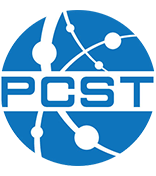Evaluation of vaccine communications and interventions, 1998-2014 – Do any actions have a shown improvement in reducing vaccine hesitancy and increasing vaccination rates to herd immunity levels?
Author: James Ansell – The Australian National University, Australia
Vaccination has been inarguably beneficial to humanity, however recent decades have seen a rise in vaccine hesitancy and refusal. In particular the false connection of the Measles, Mumps, Rubella (MMR) vaccine with Autism by Wakefield et al in 1998 started a rigorous anti-vaccination movement. Since then vaccination rates in some areas have fallen below ‘herd immunity’ levels, allowing for vaccine preventable diseases to return and claim lives.
This research reviewed the literature of vaccination program communications and interventions between 1998 and 2014 to determine if any had reduced vaccine hesitancy and improved vaccination rates. This review focused on two vaccines- the MMR vaccine which had been the subject of the Wakefield et al (1998) and the Human Papillomavirus vaccine which had been incorporated into vaccination schedules post-1998.
The research identified a gap in existing science communication literature, with few studies specifically tracking vaccination rates. Most research looked only at vaccine attitudes or intentions. Overall there was insufficient data to show any specific communication or intervention strategy reduced vaccine hesitancy or increased vaccination rates to herd immunity levels.
Of the literature that did exist, it suggested that vaccine hesitancy potentially played an unexpectedly small role in decreasing vaccination rates, with logistical issues predominately preventing vaccination. Additionally most interventions relied on single interactions, so vaccines requiring multiple sessions e.g. booster shots could not have immunisation rates determined at all.
This suggests that potentially interventions and communication strategies that have multiple interactions and address logistical barriers may be sufficient to attain herd immunity levels without needing to directly address vaccine hesitancy.
Recommendations for future research to fill this literature gap include a larger focus on directly tracking vaccinations rates rather than vaccination attitudes or intentions, as well as developing communications strategies that focus on logistical barriers and engage with audiences multiple times.
Presentation type: Individual paper and visual talk
Theme: Society
Area of interest: Investigating science communication practices
